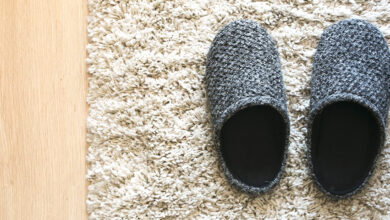Best ways to beat the winter blues
Editorial Feature

In the far northern and southern hemispheres, sunlight becomes less strong during winter and lasts for a shorter duration each day. Sunlight is a key cog in everyone’s hormone levels and mental wellbeing.
While Seasonal Affective Disorder (aptly shortened to SAD) is a diagnosable condition that encompasses more serious depression symptoms, many people without SAD feel some sort of downturn when winter rolls around.
With that in mind, here are a few of the easier ways to prevent those winter blues, before they hit you too hard.
Get outside
The first and most obvious way to avoid the symptoms associated with less sun exposure is to get more sun! Getting outside for 30 minutes every day – or even just 10 minutes – can make a huge difference in your mental wellbeing.
Even if it isn’t a ‘blue bird’ day, getting outside and catching a few rays can help your body queue up some serotonin. Serotonin can help moderate your mood, amongst many other key bodily functions.

Even if it’s cold out, learning how to layer clothing can ensure you stay warm in even the coldest conditions. When you can, expose some of your skin to the sun, especially near mid-day. Even better, if you can get out right at the start of your day, you’ll give your body a nice boost to start the day.
Exercise
Keeping yourself physically active has numerous benefits, not only during winter. According to the NHS, regular physical activity can lead to a lower risk of coronary heart disease, stroke, depression, dementia and much more.
While different guidelines apply to different ages, in general, adults should aim for 150 minutes of moderate physical activity each week. This might sound like a lot, but it’s really just 30 minutes, five days a week.
If you’re not ready for that kind of commitment, ease your way up to an achievable goal. Sitting less and moving more is a great way to get ahead of the winter blues, no matter how often you do it.
Eat healthy foods
The cold of winter bribes us to eat more potatoes, cheese, carbohydrates and buttery garlic bread. While these ingredients aren’t necessarily bad on their own, everything is better in moderation.
A quick look at the NHS’ Eatwell Guide points towards eating these kinds of carbs in equal amounts to fresh fruit and vegetables. So don’t let the pull of cheese tease you into forgetting about the complex carbs your body needs.
A healthy, balanced diet can help boost your mood and regulate your body weight over winter – if you look good, it can help you feel good as well.
Stay social
The cold and rain pushes people indoors, which can lead many to feel socially isolated or lonely. But it doesn’t have to be this way; just because the weather turns doesn’t mean you have to turn your back on your friends and hobbies.

Indoor and outdoor catchups can bring brightness to your day, and all you have to do is send an invite and bundle up. When you’re invited to an event or party, make sure you attend if you’re feeling up to it. Humans are social animals, so spending time with people – even if you decide to leave early – can help you beat the winter blues.
Embrace winter
A positive mindset can go a long way, and leave it to some of the happiest people on Earth, the Danes, to embrace winter in a positive way with their concept, hygge. Hygge, pronounced ‘hooga’, is about relaxing, slowing down, and enjoying life’s quieter pleasures. You can incorporate this into your life by bundling up, staying indoors, enjoying a hot drink, and simply talking to friends and family.
On the flip side, embracing winter could mean something completely different to you if you wanted it to. You could accept that winter is cold, and revolve your hobbies and activities around this special time of year. Besides, snowboarding, skiing, ice skating, cold water immersion, ice hockey, and visiting winter markets are some of the things that make winter so special.
Light therapy
If the more pragmatic options listed above don’t tickle your fancy or work for you, there are still a few more options to beat the winter blues. One of your options is to use a light box, or what some call a ‘happy light’.
Light boxes can simulate the sun, so when there’s less sunlight and the rays are weaker, light boxes seek to bridge that gap. It’s best to use them early in the day, for at least half an hour. Similar to light boxes, sunrise alarm clocks can help as well. These gradually light up your bedroom, mimicking a sunrise.
What’s good about most light boxes and sunrise alarm clocks is that they filter out harmful ultraviolet rays. They also have little, if any, side effects.
Do your research before purchasing one, as the scientific evidence behind light boxes is mixed, and there are many different products to choose from. It may be helpful to ask your doctor about light boxes as well.
Fish oil and vitamin D
If you eat enough fatty fish, say two servings per week, this might not apply to you. But if you’re not a big fish or seafood eater, getting enough omega-3s could be a challenge for you. Omega-3s, like DHA and EPA, can help with many different bodily functions, including brain and heart wellbeing – and in relation to winter blues, they might help protect against depression.

When it comes to vitamin D, the sun is one of the main instigators of vitamin D production in the body, so when we get less sunlight, we produce less vitamin D. You could consider supplementing your vitamin D, which could help you keep your levels up during autumn and winter. Again, while fish oil and vitamin D are recommended by the NHS, it’s still worth asking your doctor before taking any supplements.
Natural negative ion exposure
Now, this might sound like a bit of voodoo, but if you’ve tried everything else without results, there’s no harm in spending a bit of time outdoors on the beach or near a waterfall. Negative ions are molecules that have gained one or more electrons, and they can be found in a number of places in nature.
The literature on negative ions is mixed, but a comprehensive study based on more than 80 years of research concluded that negative air ionization is associated with lower self-reported depression scores.
The easiest way to get your fix of negative ions is to sit very close to anywhere where water crashes into water, so waterfalls, beaches, even water fountains in public or office lobbies. Mountains and plants also supply negative ions, albeit in smaller doses.
There are also ionizer devices, but these are best avoided. They can charge indoor air and produce ozone, which can irritate lungs.
So if you’re dealing with the winter blues, there are a number of ways to make a difference in your mood this winter.
To see your company in any upcoming features we are arranging please email editorial@hurstmediacompany.co.uk






